Many believe the Hellraiser films to be the best and longest horror series ever made, but some criticise the lack of variation in the plots of the succeeding sequels, as well as the budgetary constraints that hampered the films.
No true horror lover, however, can deny that Clive Barker’s 1987 picture was anything but a classic. And, if the sequels aren’t quite as wonderful as the original, they’re still enjoyable horror pictures in their own way.
Hellraiser follows in the footsteps of classic horror films like The Thing and Candyman, which were based on short stories or novellas. Clive Barker’s novella The Hellbound Heart was published in 1986, and he was soon directing a film adaptation. It was his revolutionary style of storytelling that made the film’s characters and the monsters so intriguing.
Cenobites are demonic entities from another labyrinth-like hellish realm that Leviathan rules. Leviathan is the God of flesh and pleasure, and all Cenobites see flesh as an object of craft, something that should be worked upon to create pieces of art. They exist to serve their master and protect his labyrinth, which is undeniably similar to hell. The cenobites can be considered as demons who work at the behest of their leader named Pinhead.
These demons travel between different realms in search of carnal pleasure via a portal or a puzzle box named the Lament Configuration. The most fascinating aspect of this box is that everytime it is used, the cenobites emerge and attempt to submit the user to other worldly pleasures, but this pleasure appears to weak humans as horrible agony.
It’s impossible to tell if they’re angelic or demonic because of their contradictory character. For instance, they’re angels to people who love sadomasochism but are demonic to others. However, Pinhead likes to believe that he’s just an explorer of different realms.
He describes himself and his friends as explorers who seek to discover novel types of pleasure and pain, and they’ve reached such a stage of hedonism that pain and pleasure have become one and the same thing for them.
The cenobites, on the other hand, became more like biblical demons who punished sinners as the story went. There were references to notions like The Ten Commandments and The Judgement Day by the eleventh film. If there’s one man who contributed to the franchise’s success after Clive Barker, it’s Doug Bradley, who played Pinhead in the first eight films.
The mere fact that he was there drew the audience in. Let’s take a closer look at each of the ten Hellraiser flicks to learn more about their plots and what makes them cult classics.
Having said that, we’d also discuss the few red flags that came up over time. So folks, get your toys and enter your red rooms because we’re going to have one hell of a sadomasochistic thrill ride.
Hellraiser (1987)
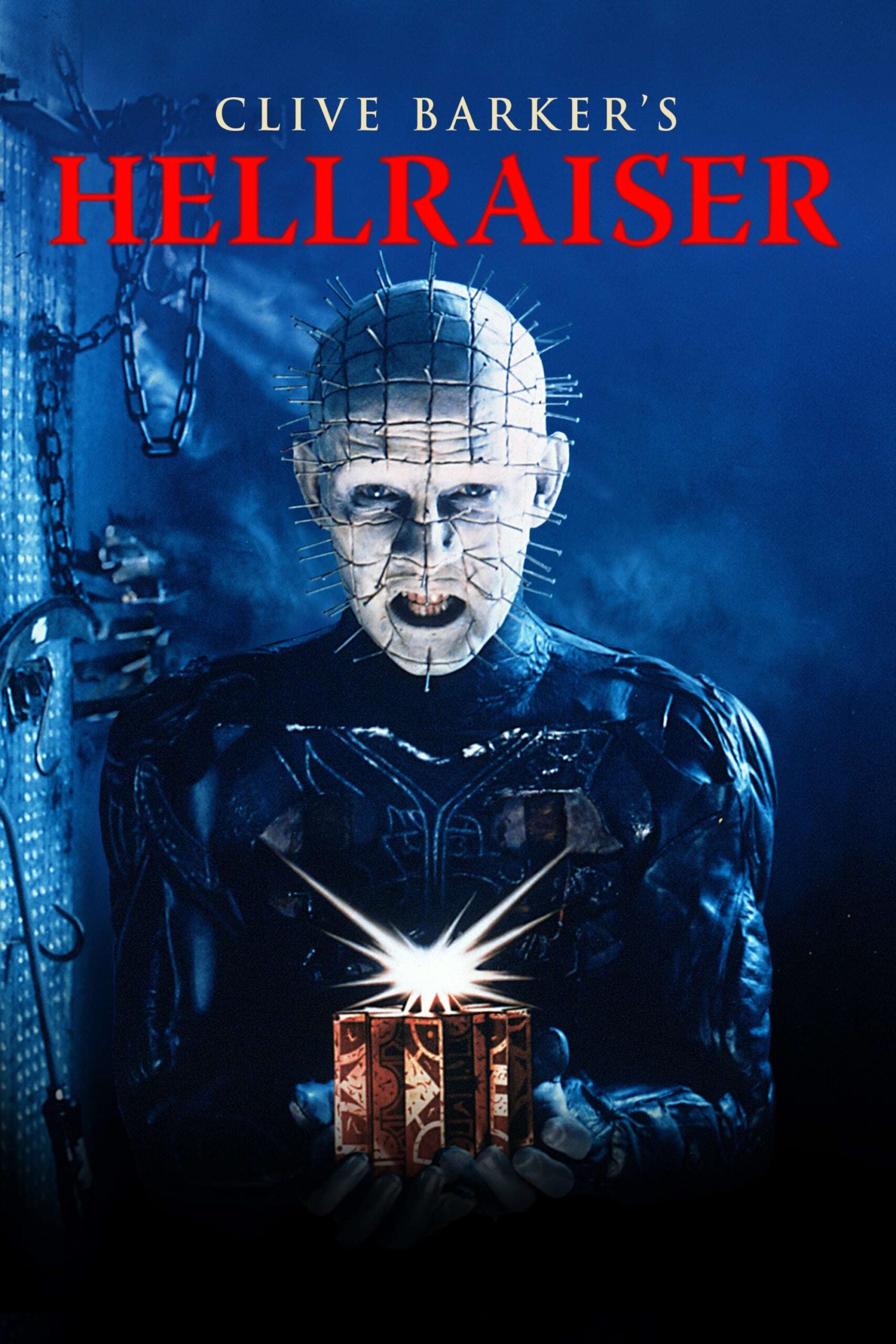
Frank Cotton purchases an enigmatic puzzle box from a Moroccan trader. When Frank finally solves the riddle, hooks and chains appear out of nowhere and tear him apart. The chamber is left with many swinging chains and the bloodied remains of Frank’s body after this horrible carnage.
Soon after, a man in black robes enters the room and restores Frank’s puzzle box to its previous state, transforming the room into what it was before Frank solved the mystery. Just before his brother Larry and Julia married, Frank had a brief affair with his brother’s bride.
Despite being married to Larry, Julia still had feelings for Frank. One day, Larry cut his hand in a minor accident, and blood dripped from his hand and into the attic floor. As soon as this happened, Frank’s body resurrected in the form of a skinless human figure.
Julia finds the seemingly undead Frank, and because of her feelings for him, she agrees to help him with whatever he required. Frank explains to Julia that in order to regain his former self, he has to consume the life out of dying humans.
Frank had exhausted all forms of sensual pleasures and sought new arenas of sexual and physical gratification. To achieve this, he sought the help of the puzzle box, which was the doorway to another reality where one could experience extreme carnal pleasures.
Cenobites, demonic entities, appear once the puzzle is solved. Julia collects men from pubs and takes them to her home so Frank can eat them. Frank rejuvenates himself by sinking his hands into the wounds of the dying men after she mortally wounds them by stabbing them.
This goes on until Larry’s daughter Kirsty suspects Julia and spies on her. She interrupts Julia as she takes a man to the attic for Frank’s feeding. Frank tries to assassinate Kirsty, but she escapes with the puzzle. She collapses quickly, though, and wakes up in a hospital, where she solves the problem.
Naturally, several cenobites and a demonic creature called Engineer appear. The cenobite leader named Pinhead tells Kirsty that they are simply explorers from another dimension looking for new forms of physical pleasure and can no longer differentiate between pain and pleasure.
When they attempt to take Kirsty back to their realm, she tells them that Frank has escaped them. Kirsty tries to trade Frank in return for her safety from the cenobites. Meanwhile, Frank has killed Larry and wears Larry’s skin.
When Kirsty returned home, Frank and Julia attempted to kill Kirsty to complete Frank’s rejuvenation, but Frank accidentally killed Julia. The cenobites reappeared and took care of Frank for good this time.
After tearing apart Frank, the cenobites attempted to take Kirsty, but she managed to banish them back with the help of the puzzle box. The film ends with Kirsty throwing the box into a burning pyre and a winged skeletal entity taking away the box. The box finally reaches the Moroccon merchant who had sold it to Frank.
Clive Barker, the writer and director of Hellraiser, ushered forth a new era of horror cinema. It was strange and weird, yet it was also effective and frightening. He portrays the cenobites as a strange cross between vampires and zombies, but they are far scarier than both zombies and vampires since they are not just cruel and mindless, but also have a purpose and objective.
Despite having a budget of just under a million dollars, Hellraiser’s special effects, music, and dismal subject added to the film’s value. Barker has created a film that is dark, intense, and terrifying.
Hellbound: Hellraiser II (1988)
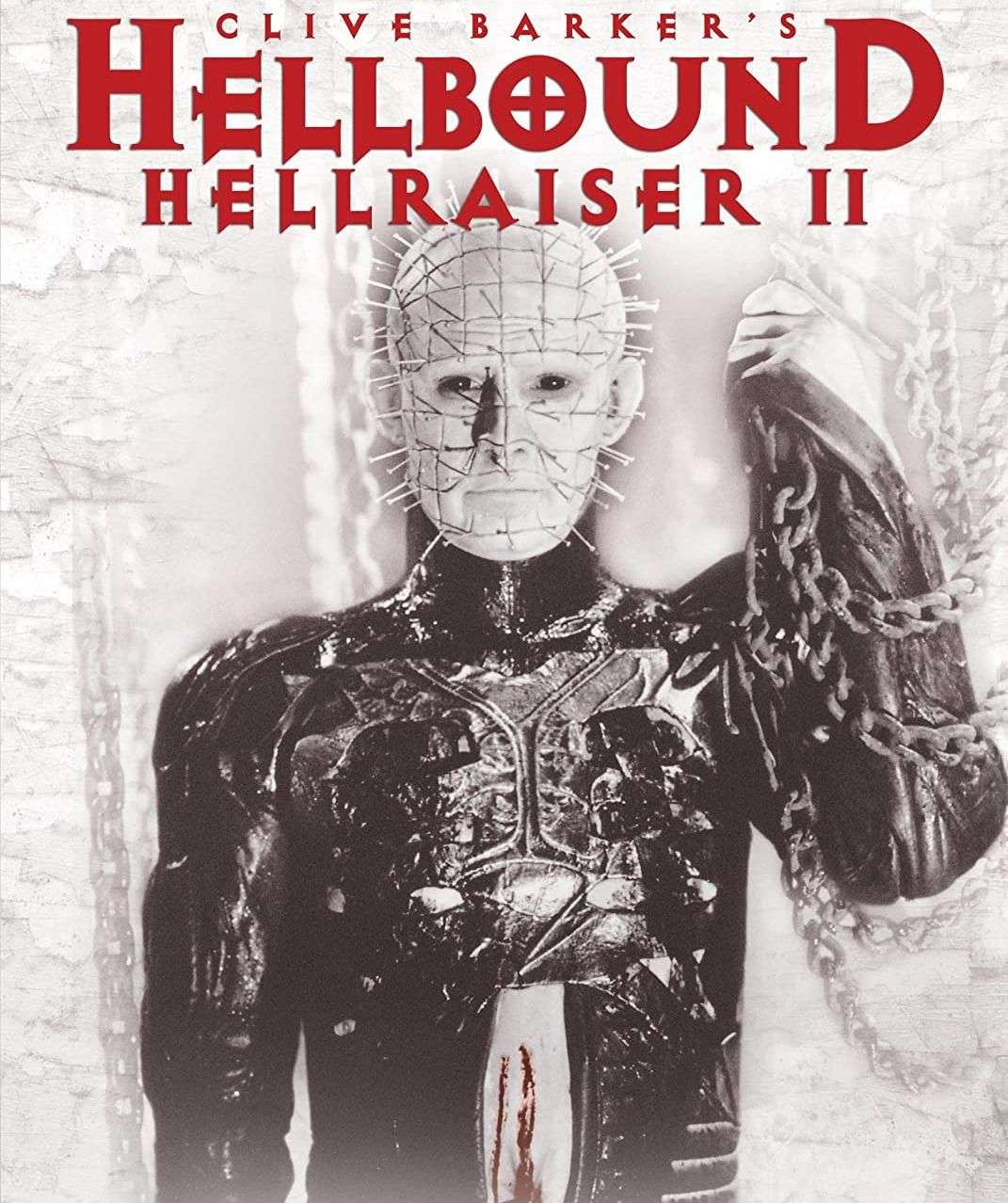
Frank had killed Larry and made Kirsty an orphan. Immediately after that, Kirsty was taken to a psychiatric hospital, where she was given under the care of Doctor Channard and his assistant Kyle MacRae.
Kirsty was being questioned by Channard and Kyle when she suggested that they trash the bloodied mattress on which her stepmother Julia had died. Dr. Channard, unbeknownst to Kirsty, is infatuated with the puzzle box, also known as the Lament Configuration.
He carries the mattress home after hearing Kirsty’s storey and encourages a mentally ill patient to lie down on it and slit his own throat with a razor. Julia arose from the dead in a skinless corpse as the patient’s blood reached the mattress. Kyle was sceptical of Kirsty’s story and was looking into her claims.
He happened to be present during Julia’s resurrected incident, but he was wise and quick enough to depart the scene. Meanwhile, Kyle tells Kirsty that he believed her, and the two of them leave to stop Channard. However, by now, Julia had fully renewed, and she kills Kyle while she knocks Kirsty unconscious.
Channard and Julia abduct another patient named Tiffany as she had an affinity for solving puzzles. They force her to solve the Lament Configuration. She does so, and they enter the labyrinth-like realm of cenobites. Julia betrays Channard, and the God of the hellish realm, Leviathan, transforms him into a cenobite.
Meanwhile, Pinhead and other cenobites find Kirsty, who had followed Julia and Channard, and the cenobites tell her that she was free to explore the realm. Kirsty finds Frank, who tells her that he impersonated her father and tricked her into dreaming that her father was in trouble.
However, Julia saves Kirsty by killing Frank as revenge for killing her and consuming her body. But soon, Julia herself dies, and only her skin is left behind. Channard, who is now a cenobite, discovers Kirsty and Tiffany as they attempt to flee, but Pinhead and the other cenobites prevent him from killing them.
Despite Channard’s overwhelming victory over the other cenobites, Kirsty and Tiffany are able to flee and close the entrance to hell that the Lament Configuration had opened.
The script for Hellbound was written by Clive Barker, and the film closely references the previous picture, but the most important part is Pinhead’s past, which reveals that he was once a British military officer named Elliott Spencer.. Spencer had solved the Lament Configuration and transformed into a cenobite.
Director Tony Randel followed the footsteps of Barker and made the film a grander gorefest with dark events taking place every now and then. He gave us a view into Leviathan’s hell, and we couldn’t thank him enough.
As far as sequels are concerned, it is important for directors to not only stick to the core story but also expand on the backstory and subplots.
Randel was one of the editors in the previous film and took the directorial reigns for this one, and he intelligently gave more crucial roles to Clare Higgins as Julia and Ashley Laurence as Kirsty. Barker and writer Atkins were brimming with ideas for the subsequent films, and it was certain that Pinhead would be a recurring character.
Hellraiser 3 Hell on Earth (1992)
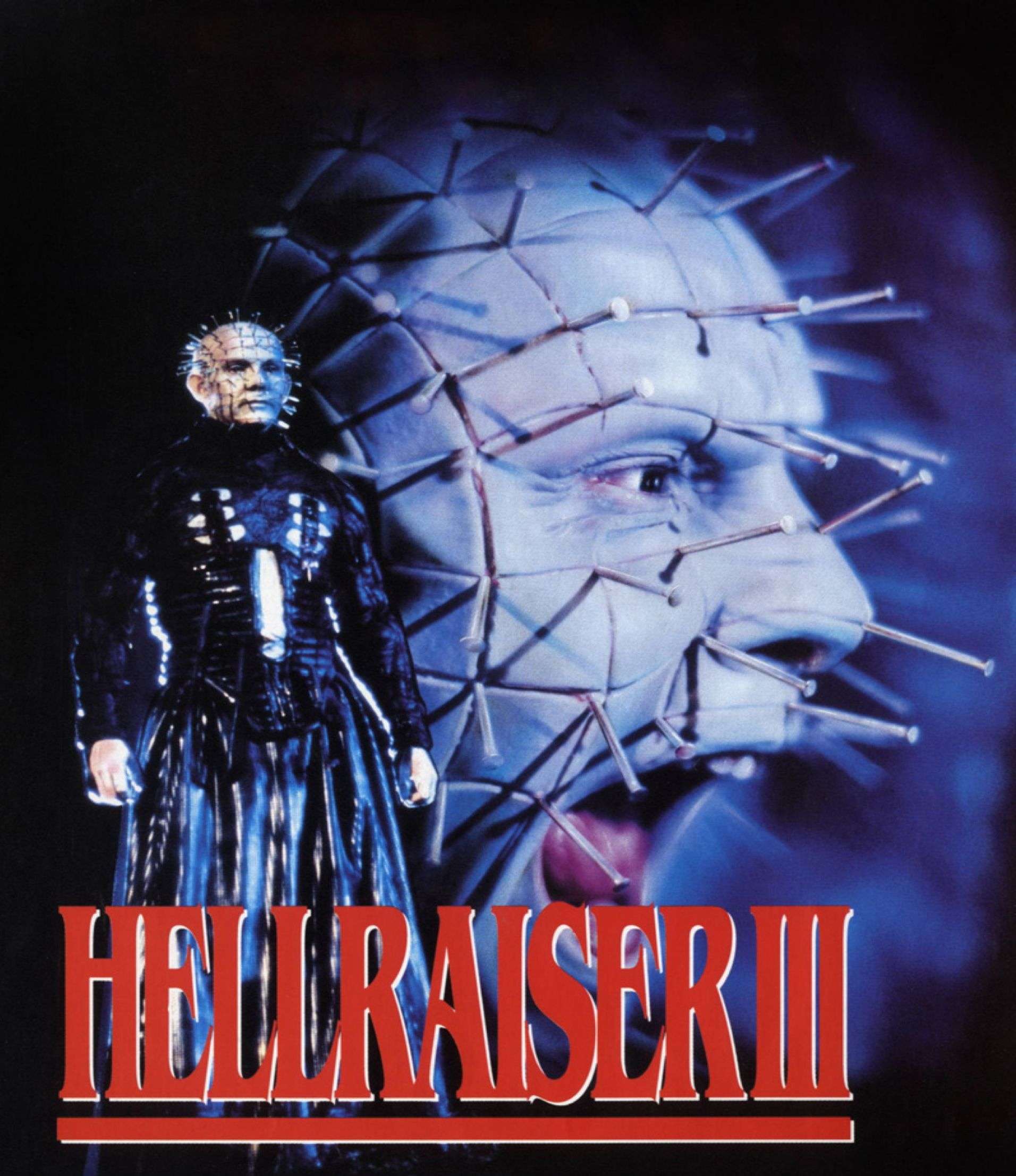
Pinhead discovered that he was previously a British Army Captain named Elliot Spencer during World War I. The devil is split into two parts as a result of this knowledge. Spencer’s former self finds up in Limbo, a section of hell that holds the souls of those who die in original sin without being allocated to the Hell of the Damned.
The second is Pinhead, who is now imprisoned in The Pillar of Souls, a pillar with deformed features and writhing bodies. An ambitious reporter named Joey Summerskill finds a teenage clubgoer with chains pierced into the body.
These chains become sentient at the hospital emergency ward and tear the clubgoer’s body into bits and pieces. Soon, Joey comes across another clubgoer named Terri, who tells her that the chains emerged from a strange puzzle box that she found near a pillar at The Boiler Room Club, which J. P. Monroe owned, and Monroe had bought the Pillar of Souls and kept it in his club.
Pinhead and Monroe made a deal in which Monroe would bring Pinhead clubgoers, and in return, Pinhead would give him immense powers otherworldly pleasures. Terri gives Joey the Lament Configuration while they’re investigating, and they also come upon a tape of Kirsty Cotton.
The puzzle box is the only method to return Pinhead to hell, according to the videotape. Joey, meantime, has nightmares about her father’s death in Vietnam. Spencer warns her in one of her dreams that Pinhead will wreak havoc on Earth by breaking the cenobite code, and that the only way to stop him is to merge Spencer’s soul with Pinhead and then use the puzzle to exile him back to hell.
Terri encounters Monroe in the club, who intends to feed her to Pinhead, but she strikes a deal with Pinhead in which she promises to sacrifice Monroe in exchange for being changed into a cenobite. By now, Pinhead becomes free from the pillar and wreaks havoc on the clubgoers; as soon as this news reached Joey, she rushed to the club.
Pinhead demanded the Lament Configuration from Joey but she refused and escaped from the spot, only to be chased by several of Pinhead’s demonic minions. She gets pinned down by the cenobites in a construction site, but she manages to solve the puzzle and send all cenobites back to hell.
However, this takes her to the Limbo, where Pinhead tricks her into giving him the box. Here, Spencer’s soul attaches itself to Pinhead, and Joey stabs Pinhead through the heart with the box that had transformed into a dagger. Joey buries the puzzle box in a pile of concrete, but it is later revealed that the interior of the finished construction site was a replica of the puzzle box.
Directed by Anthony Hickox, the film Hell on Earth isquite different from its prequels. For instance, it was the first film of the anthology to be directed in the United States and you’ll definitely be able to feel it while watching.
Doug Bradley as Pinhead developed to great levels. Pinhead ended up being the film’s main adversary, and Doug Bradley did a fantastic job playing both Elliot Spencer and Pinhead. Hickox made sure there was never a dull moment in the movie, and he kept the film and his cenobites moving at all times.
Clive Barker’s New World Pictures and Film Futures were in financial trouble, and Miramax eventually took over the project. This third edition of the Hellraiser series is recognised as one of the greatest, even without Barker’s direct influence. However, because the film is set mostly in a nightclub, we wouldn’t have objected if there were more strippers.
Hellraiser 4 Bloodline (1996)
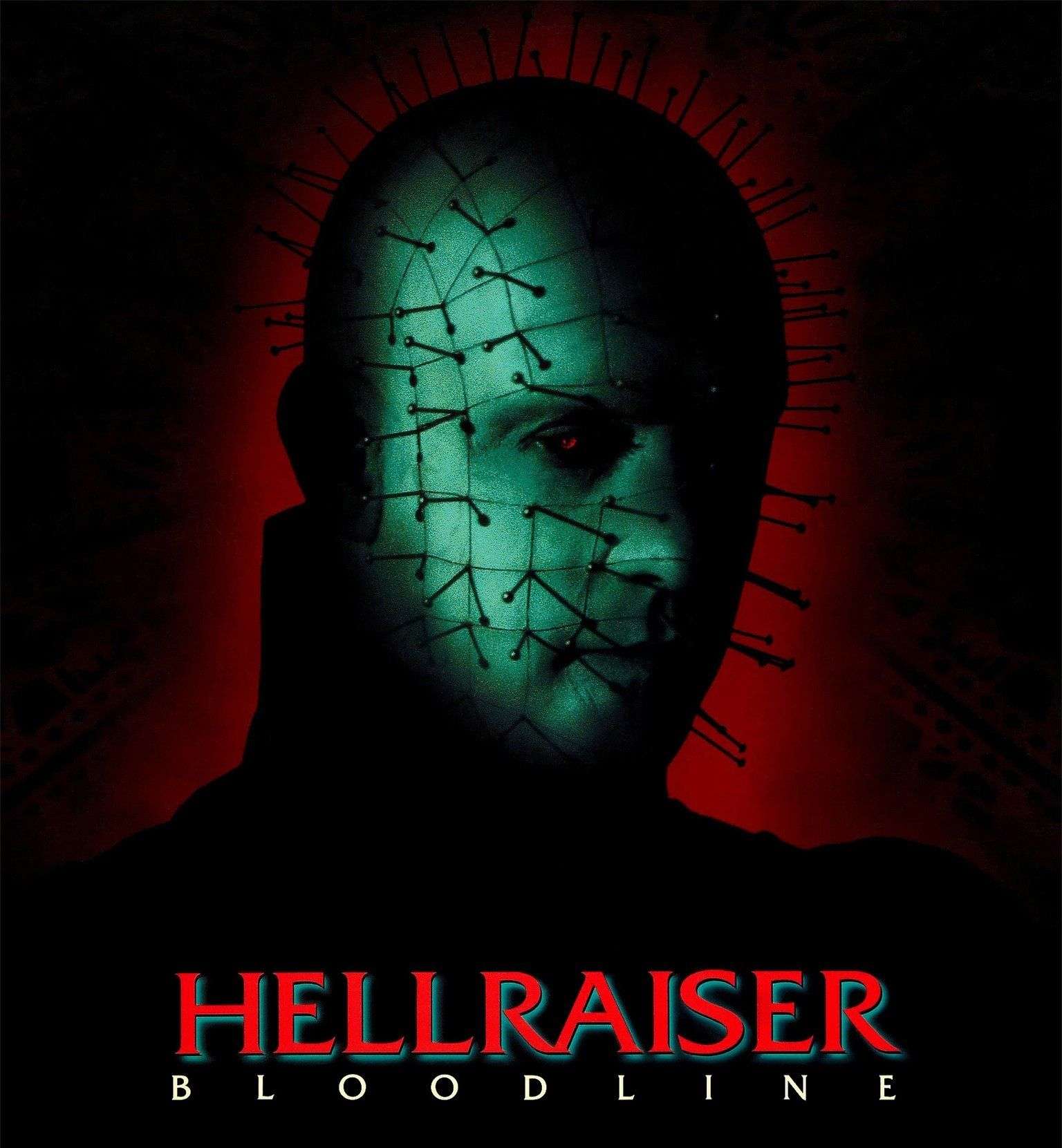
In 1796 in Paris, a French toymaker namedPhillip LeMarchand made the greatest work of his life at the behest of an aristocrat named Ducde L’Isle, who was devoid of most moral principles, a sense of responsibility, or sexual restraint. This invention was the Lament Configuration through which L’Isle wished to summon demons from the depths of hell.
To LeMarchand’s horror, L’Isle and his assistant Jacques sacrificed a peasant girl and used her to summon a cenobite named Angelique. LeMarchand dashed home to construct an anti-Lament Configuration that would stop the current chain of events and close the portal. Jacques, on the other hand, murdered his master and enslaved Angelique on the condition that he not block the wants of hell.
Angelique and Jacques assassinate LeMarchand and inform him that his bloodline would be cursed for aiding in the opening of the portal to hell. In 1996, one of Lemarchand’s descendants, John Merchant, constructs a tower in Manhattan that mimics the Lament Configuration, two hundred years later.
In the third film, Joey had hidden the Lament Configuration in this same structure. Angelique finds out about the building from a magazine and asks Jacques to take her to Manhattan, but when he refused, she kills him. She manages to reach the building and attempts to seduce Merchant but fails.
After learning that the Lament Configuration is hidden in the building, she tricks a security guard into solving it, and this act summons Pinhead.
Angelique and Pinhead initially fight but later agree to join forces to stop John Merchant from making the Elysium configuration or the Anti-Lament Configuration. Initially, Angelique wanted to work for Pinhead’s cause, but she has grown tired of being a minion of hell and wanted that Merchant activated the Elysium Configuration so that she would be free of hell’s clutches.
However, Merchant’s prototype failed, and Pinhead killed him but he solved Angelique’s puzzle box and sent both the cenobites back to hell. More than a century later, in 2127, another descendant of Le’Marchand named Paul Merchant seals himself in a room on a space station named The Minos.
He has a robot solve the Lament Configuration and summon the cenobites, including Pinhead and his new slave Angelique, using the Lament Configuration. The ship was eventually revealed to be the finished design of the Elysium Configuration. He escapes in a pod after the cenobites enter the space station.
Soon after, he activates the Elysium Configuration, which causes a cascade of lights and mirrors to appear, transforming The Minos into the puzzle box. This was the last appearance of the Pinhead.
The film was an ambitious project, or at least that’s what writer Atkins had thought. What was supposed to be a film of about 180 minutes was reduced to something around 80 minutes.
Bloodline is essentially three films packed in one, and such a magnanimous plot needs skillful direction, efficient storytelling, big budgets and bigger dedication. Miramax didn’t have at least two of these things, and the final film didn’t even remotely do what was expected out of it.
However, this wasn’t a total surprise as the studio involved itself more than it was supposed to. They didn’t take any ideas from Barker and director Kevin Yagher chose to take the name of Alan Smithee, which is an alias used by directors who want to go uncredited.
He left filming when the studio wanted to change the relationships of the character and shoot extra scenes. Ultimately, Joe Chappelle took the reigns, gave the film a happy ending, and cut the film by over twenty-five minutes.
With Bloodline, the franchise suffered a huge setback from which it never recovered in the following years. Bloodline was supposed to explore the stories of the past, present, and future, but it ended up telling the story of how executive power suffocates artistic freedom.
Hellraiser 5 Inferno (2000)

Joseph Thorne is a completely dishonest and immoral Denver police detective. He engages in narcotics, sex, and other questionable actions while on job. Thorne is called in to look into a ritual murder and discovers a mysterious puzzle box. He takes the box home to satisfy his puzzle cravings.
He begins to have hallucinations of bizarre objects and animals shortly after finishing the riddle. He sees mangled ladies seducing him and being followed by a beast with no eyes or limbs. Thorne soon discovers a link between these hallucinations and the perpetrator of the ritual murder.
He concludes that the murderer is known by the name of Engineer, and he has abducted a young child. However, as Thorne begins to investigate and find The Engineer, someone begins to kill his family, friends and acquaintances. To make things worse, the Engineer leaves one finger of a child at each crime scene.
When Thorne goes to visit his psychiatrist to get cured of the bizarre hallucinations, the psychiatrist reveals that he’s Pinhead and that Thorne has been in the realm of the cenobites since the time he solved the Lament Configuration, and the cenobites have been inflicting psychological torture on Thorne for the crimes he’s committed and the cruelties that he had inflicted upon others.
It is revealed that the Engineer is a making of his own mind and is the manifestation of Thorne’s brutality, while the little child is the personification of his innocence. But Thorne has constantly been killing his innocence by indulging in acts of sexual gratification and other sins. Pinhead tells him that now he would be subjected to eternal pain and suffering for the deeds he committed in the mortal realm.
This film was directed by the same man who directed Marvel’s 2016 hit flick Doctor Strange. Yes, director Scott Derrickson did his best to revive the franchise, but the executives decided to play extremely safe and ended up rewriting an independent script so that it could fit the Hellraiser universe.
As was expected of it, the film underperformed. Hellraiser films are known to live and breathe in body horror, but the 2000 installment attempted to rely on psychological torture more than physical torture. As great as the idea might have been, that’s not what the fans of Hellraiser demanded.
This was the first film to be released straight to video while the previous four were given theatrical releases. The scenes in which Doug Bradley appears as Pinhead are the greatest in the picture, and those four minutes are the reason why every Hellraiser fan has seen it.
Stephen Jones, who was involved in the publicity for other Hellraiser films, had written a magnificent storyline in which he wanted Kirsty Cotton to return and be pitted against a cult that planned to release Leviathan himself on Earth, with the entire city of London encased in a massive Lament Configuration.
However, such a great concept necessitated a grand budget, and the executives were not in the mood to risk being roasted in financial hell.
Hellraiser 6 Hellseeker (2002)

Trevor and his wife Kirsty are involved in a serious car accident when their vehicle crashes into a river below a bridge. Both car doors were open when the police divers arrived, but Kirsty was nowhere to be found. Trevor, on the other hand, was able to flee and save his life.
Trevor wakes up in a hospital a month later to discover that he is the top suspect in his wife’s murder, and detectives Givens and Lange visit him frequently, but strangely, they never come together. Trevor has a head injury as a result of the accident, and he is experiencing numerous hallucinations. Trevor can’t tell the difference between reality and fiction.
To make matters worse, he sees his friend Bret kill himself. There it is revealed that both Lange and Givens are, in fact, a demon with two heads. That’s why they never appeared to him together.
Trevor flees with his life and lands up in a morgue with a body lying on the operating table. He approaches to uncover the body when Pinhead appears and tells him that his wife Kirsty is still alive.
Trevor was a highly promiscuous man and slept with many women and always saw Kirsty as a hindrance to his way of life. He made her solve the Lament Configuration and she did so, but she made a deal with Pinhead and offered him, five souls in return for her life. Pinhead tells Trevor that he had received the souls of three of Trevor’s mistresses and that of Bret, who wanted to kill Kirsty for her fortune.
As Trevor uncovered the dead body on the operating table, he was shocked to see that it was his own body. It is revealed that Kirsty killed all four people and pinned the murders on her husband. She shot him in the head while he was driving, and the car plunged into the river, making the accident look like a suicide.
Trevor’s soul has been in hell ever then, and the cenobites have been torturing him psychologically by making him hallucinate and forget his previous life. His punishment for betraying his wife and failing to accept who he truly was was piecing his life back together and rediscovering his identity.
The franchise’s sixth entry closely follows its predecessor, but goes above and beyond in terms of adhering to the Hellraiser mythology. This picture, like Hellraiser 5, was developed after modifying an existing storyline, but director Rick Bota and writers Carl V. Dupré and Tim Day were smart enough to get back Kirsty Cotton, who Ashley Laurence played.
The film takes the simple plot about a man who may or may not have killed his wife and turns it around in unimaginable ways. It acts as a psychological thriller, a horror, and as well as a revenge drama.
Director Rick Bota went against the producers to show the film to Clive Barker before its release in order to get Barker’s comments and suggestions. Unfortunately, this was the last Hellraiser film to which Barker was directly or indirectly attached. Despite being largely better than its two immediate predecessors, the film failed to bring the glory that Hellraiser enjoyed back in the 80s and early 90s.
Hellraiser 7 Deader (2005)
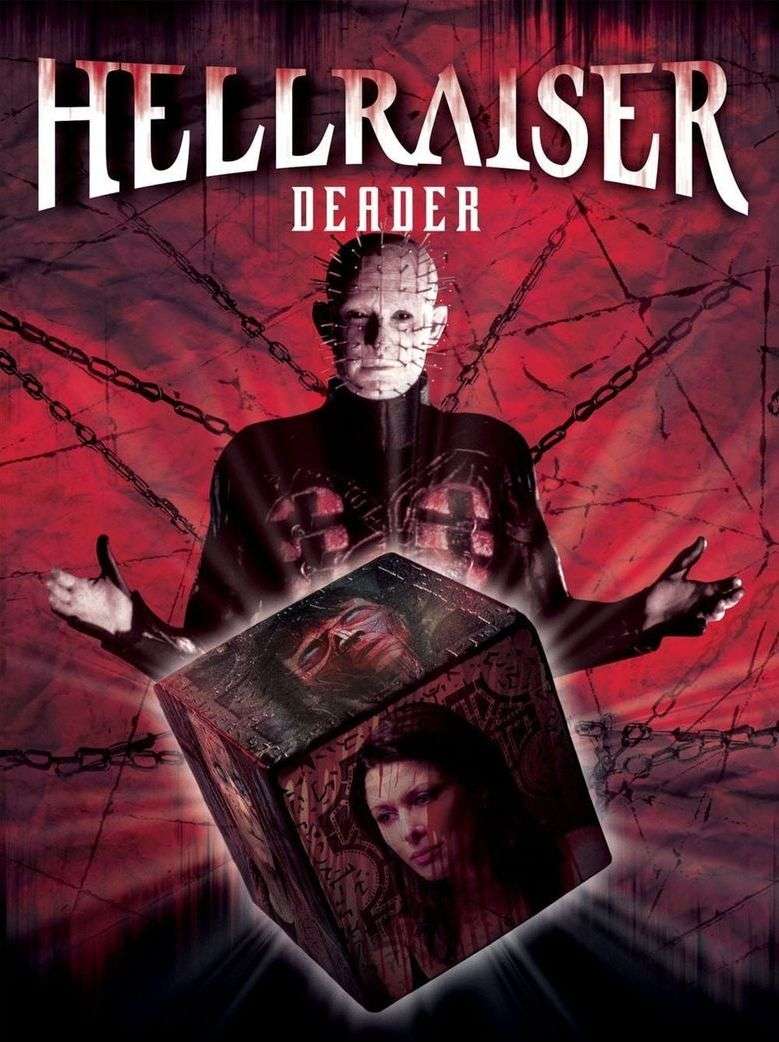
After obtaining a film showing the ritualistic death and reanimation of a member of a cult known as The Deaders, Charles sends his ambitious employee and reporter Amy Klein to Bucharest. Amy locates the sender’s home, a woman named Marla, by following the return address on the tape.
She does, however, come across Marla’s body and the Lament Configuration. She brings the Lament Configuration to her hotel room and opens it, only to be plagued by strange hallucinations and a nightmare in which she summons Pinhead. Amy meets Joey, a local resident who advises her to avoid The Deaders and tells her about the self-destructing device.
Amy finally tracks down the leader of The Deaders, a man named Winter LeMarchand. He is a direct descendant of the French toymaker LeMarchand who invented the Lament configuration.
Due to this, Winter believes that he can rule the cenobites, but he is of the opinion that the puzzle can be solved only by a person who exhibits trauma-induced nihilism. To further his plan, he created the secret cult of The Deaders and attracted emotionally challenged followers in the hope that they would open the puzzle for him.
He makes Amy see a waking dream in which she relives her troubled childhood. Amy’s father abused her as a child sexually, and she managed to kill him one day. After coming back to reality, Amy opened the box and summoned the cenobites, who began to massacre the Deaders.
Winter was chastised and mocked by Pinhead for believing he could control cenobites. Pinhead now desired to take Amy to hell, where her father awaited her, but Amy committed suicide. As a result, the box closed, and the cenobites were exiled to hell once more. The film ends with Charles sending another young reporter to investigate Amy, who has gone missing in action.
Like the films that preceded it, Deader was based on a script that was initially not written as a Hellraiser script and was later reworked so that it fits in the Hellraiser mythos. Having said that, the film intricately follows the core elements that Clive Barker birthed.
In fact, it follows the LeMarchand episode from the fourth installment and gives more screentime to the cenobites than the previous films that were released straight to video. Therefore, Deader has a horrible title but is probably the best Hellraiser film that was released straight to video.
Kari Wuhrer as Amy Klein gave a satisfactory performance as a young woman who had a troubled past. Klein had a well-developed character who was a sardonic and assertive lady, and director Rick Bota deserves credit for not turning her into a jiggly-boob chick. Another reason for the film’s success was that by the time it was released, technology had advanced significantly, allowing for more effective SFX and VFX.
Hellraiser 8 Hellworld (2005)
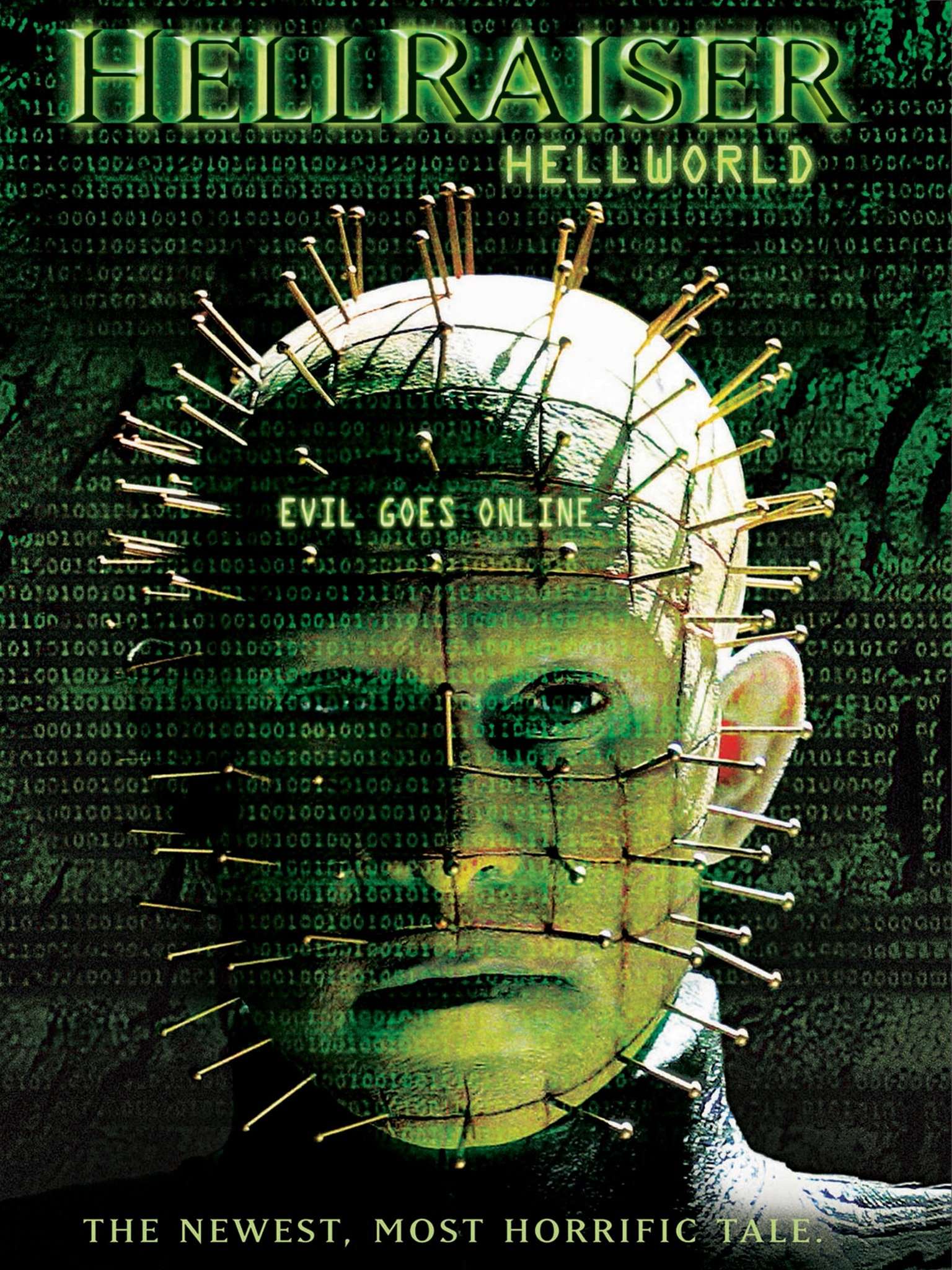
Adam and his friends were hooked on a game called Hellworld, which was based on the Hellraiser franchise. Adam was so depressed by the game that he ended up killing himself, and his buddies couldn’t help but blame themselves for his death. They believe that by taking Adam out of the game, they could have avoided it.
Two years later, the five pals are invited to a private party with a Hellworld theme. They unwillingly attend the party, where they are greeted with beverages and given cell phones with which to communicate with one another. Soon, Allison, Derrick and Mike are seemingly killed by the host, Pinhead, and other cenobites, whileother cenobites hunt Chelsea and Jake.
Chelsea hides in the attic only to find the belongings of Adam, and she realizes that the host is, in fact, Adam’s father, who blames the friends for not being able to break Adam’s addiction. In a strange turn of events, Jake and Chelsea find themselves locked in caskets and receive messages from the host on their respective cell phones.
The messages said that they were fed with potenthallucinogens with strong psychedelic powers and whatever they have been experiencing is the result of their own imagination and guilty conscious. He also tells Chelsea that Allison, Derrick, and Mike have died in their respective caskets.
The police save Chelsea and Jake. However, the host goes through Adam’s belongings and finds the Lament Configuration, he opens the puzzle, and Pinhead appears with other cenobites. Before tearing the host apart, Pinhead praises Adam and mocks his father.
Hellworld was shot concurrently with Deader, and whereas Deader was a well-made low-budget sequel, Hellworld is criminally misplaced and perplexing. Fans watching the film were confused between Hellworld and Hellraiser references since the Hellraiser universe is depicted in the guise of a game named Hellworld.
Pinhead’s character is reduced to a horror monster wielding a meat cleaver that rushes around chopping people’s heads off. He was never supposed to be someone like that. Second, the film’s audience was reduced by the expectation that viewers already knew everything there was to know about Hellraiser.
This little trick could have played in favor of the film but the poor direction and a choppy script took away the opportunity. It was a film directed towards a younger gorehound audience, something that the previous seven films didn’t seek to do.
Hellworld doesn’t aspire to be anything more than a film where young boys and girls die one by one, and it feels like it’s merely a summation of gory scenes that can be watched in any sequence and yet the film would feel the same. And just for the record, Henry Cavill stars as Mike in this one, yes, the Man of Steel. So, if you’ll watch this one for one reason alone, let it be the mighty Superman.
Hellraiser 9 Revelations (2011)
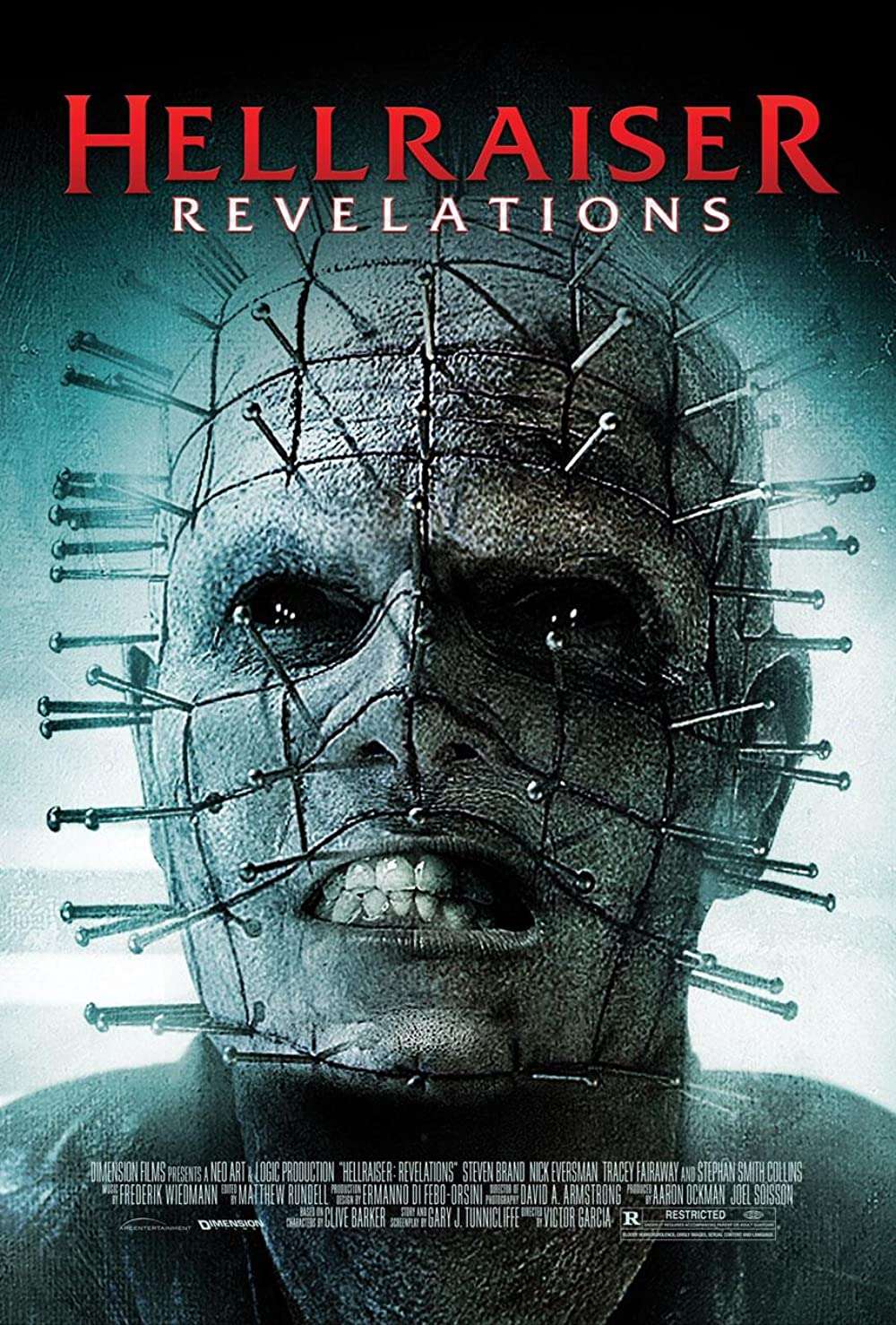
Nico Bradley and Steve Craven are two young boys who decide to travel to Mexico in order to get high and get laid. Nico and Steve had picked up a girl, but while having sex with her, Nico killed her.
The boys go missing soon after, and the videotape, Steve’s things, and a mysterious puzzle box are handed over to Steve’s mother by Mexican officials. After a year, the two boys’ families join together for dinner, and Steve’s sister Emma begs to see the tape in order to obtain closure.
When Emma gets her hands on the videotape, she watches Nico being sold a puzzle box by a strange man who promised Nico heavenly sensory sensations. Emma finds the Lament Configuration and recognizes it from the video. As she tries to understand it, Steve appears covered in blood.
The families rush him to the hospital but become stranded on the way. However, a flashback reveals that Nico managed to solve the Lament Configuration and was taken to hell by the cenobites, where he was tortured and mutilated.
He contacted Steve while the latter was having sex with a prostitute, and Nico requested him to kill this prostitute and others so that his body could rejuvenate. Steve obliged to his friend’s wishes, but even after many murders, Nico did not get his skin back.
Naturally, Steve didn’t want to help anymore, and this was when Nico killed him and wore his skin. But a dying Steve made a deal with the cenobites, who converted him into one of them so that he could exact his revenge.
It is revealed that the Steve who crashed the dinner party was, in fact, Nico wearing Steve’s skin. Emma opens the box and several cenobites, including Steve, appear to take Nico with them, but Emma’s father kills Nico.
Dimension Films only made the film because they would have lost the Hellraiser rights if they didn’t make one in 2011. It was, of course, a picture that was planned and shot in a matter of weeks. Dimension didn’t think that was a good cause to make a movie, thus the budget was only $300,000.
There was no consideration for filmmaking or aesthetic approaches, and the end result can only be described as a product. It’s best not to refer to it as a Hellraiser flick. Because of the hurry with which the picture was being made, even Doug Bradley refused to play Pinhead.
This became the first Hellraiser film that he didn’t star in. The film was being marketed by saying that it was right from the mind of Clive Barker. However, Barker posted a profane tweet denying the claims being made, and the tweet was so gross that it’s safe not to repeat it here but we will anyway.
Hellraiser 10 Judgement (2018)
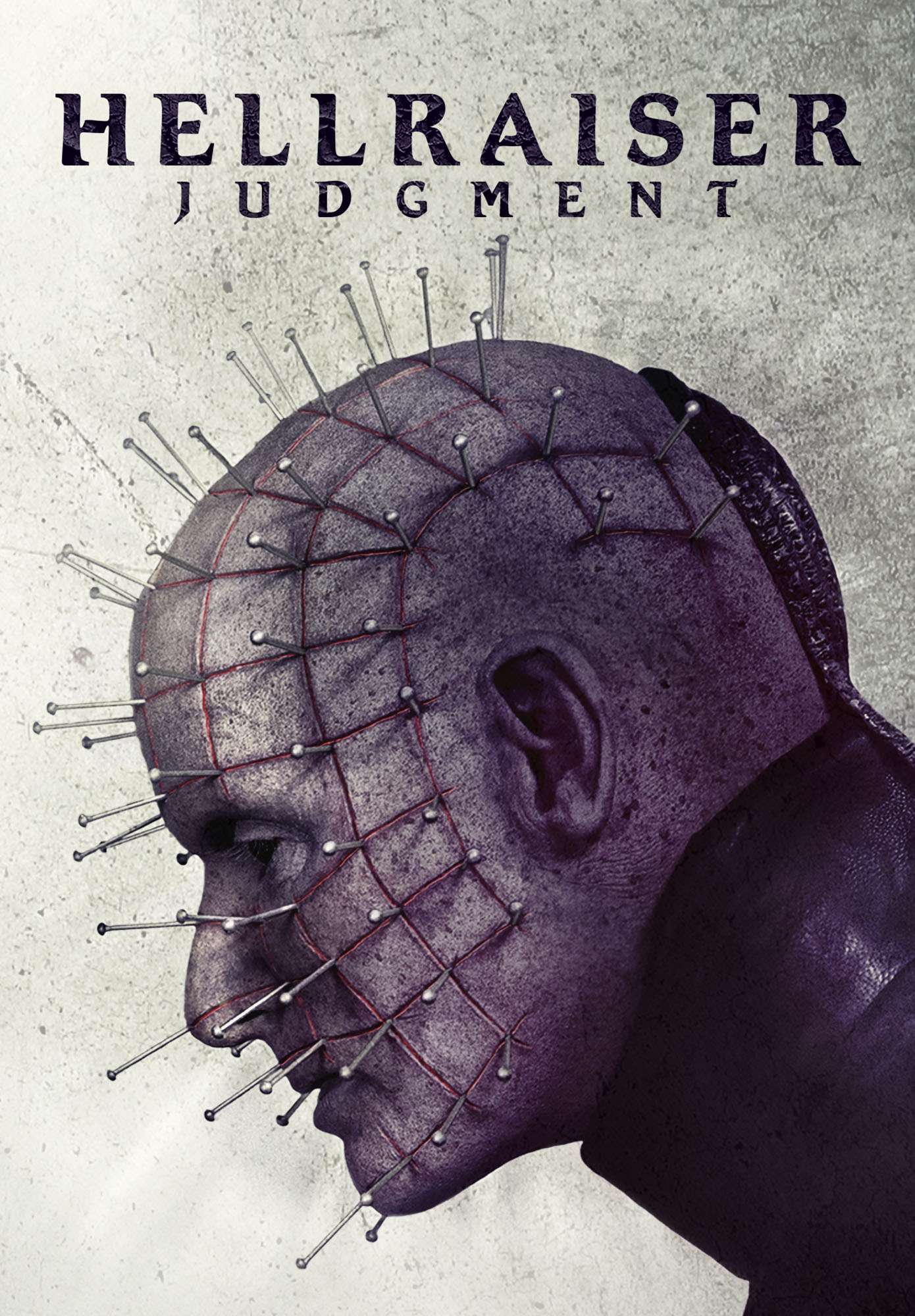
Detectives Sean,David, and Christine investigate the murders committed by a serial killer named The Preceptor, whose crimes follow the Ten Commandments. Meanwhile, Pinhead and the Auditor of the Stygian Inquisition are at a fix about revamping their methods of soul collection because the constantly evolving human technology is making the Lament Configuration go archaic.
A clue leads Sean to go to an abandoned house where a local criminal named Karl Watkins had mysteriously disappeared. Sean enters the house only to fall unconscious, and he later finds himself at the Stygian Inquisition’s domain,where a judgment is about to be pronounced for the sins he committed on Earth.
However, the archangel of wisdom, understanding, and judgment, Jophiel, appeared and ordered Sean’s release. He got away with the Lament Configuration and now has dreams about cenobites and other inmates of hell threatening to judge and redeem everyone who tried to utilise it.
When Sean and David return home, they discover no evidence of hell or the Inquisition. Sean later confesses to being the murderer and pushes the other two detectives to open the Lament Configuration and summon the cenobites.
Sean promises Pinhead the souls of David and Christine in exchange for his life. Pinhead, on the other hand, refuses, and the Inquisition’s Auditor informs Sean that he has been found guilty of his crimes.
However, Jophiel intervenes again and asks them to let Sean go because he is part of a larger heavenly plan to instill fear in the hearts of the sinners. Pinhead wouldn’t have this anymore and he tricks Christine into killing Sean. Due to this trickery, God expels Pinhead from hell and forces him to live his life as a mortal.
Writer and director Gary J. Tunnicliffe was attached with the Hellraiser franchise for decades as a makeup artist. However, he had a vision for a Hellraiser film and had pitched the idea to producer Bob Weinstein.
Dimension Films was again forced to make a Hellraiser film to retain the rights, and that’s when Tunnicliffe got his opportunity. After thirty years of the inception of his idea, he was finally making a film. And, unlike the previous few installments, this script and story were written exclusively for the franchise.
Doug Bradley was approached to play Pinhead but he refused by citing the poor quality of the Hellraiser sequels that Dimension Films was making. In the end, Paul T. Taylor was cast as Pinhead, and Tunnicliffe did an excellent job of not copying and repeating Doug’s Pinhead. Instead, he gave Taylor’s Pinhead a completely new identity, look, and feel.
Judgment turned out to be the best of a slew of Hellraiser sequels that didn’t feature Clive Barker. It was a breath of new air because it didn’t follow the typical plot. However, it suffered significantly from the drawbacks of a low budget as well as the fact that the Hellraiser franchise was no longer as popular as it once was. In actuality, in order to minimise negative press, the film was given less exposure.
Why Is The Hellraiser Franchise Dying?
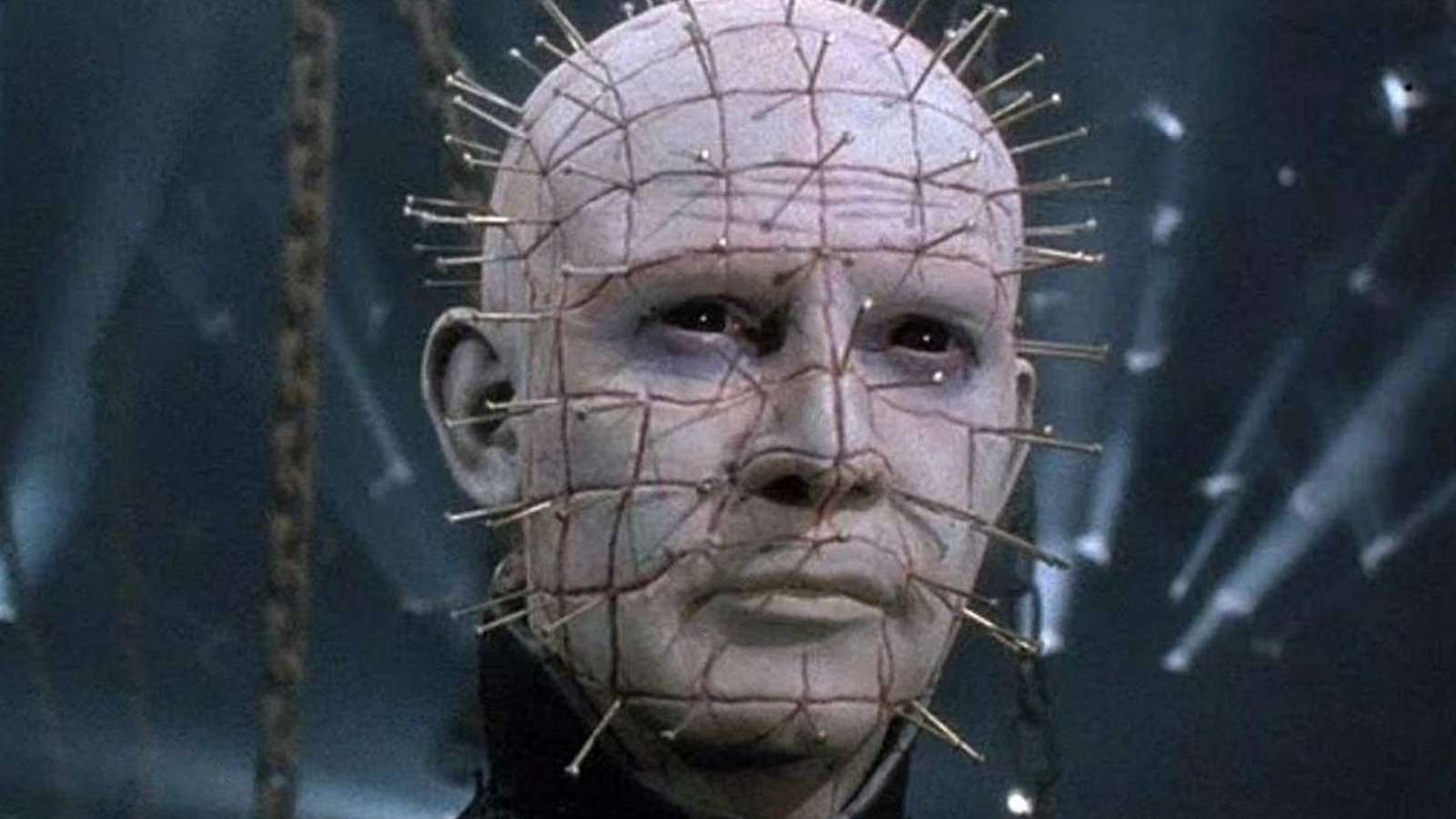
The film Hellraiser was not the first to combine sexuality and horror in a single work. Humanoids from the Deep, Cat People, Inseminoid, and other films existed at the time, but Clive Barker’s Hellraiser was unique in that it developed a totally new mythology and provided audiences a true taste of sadomasochism on the big screen.
Despite having a ten-film anthology, the genuine craze died after the first four, and the last six were essentially flimsy attempts to keep the series alive, with sequels occasionally made so that Dimension Films could keep the Hellraiser rights. There are numerous explanations for the series’ failure to maintain popular support.
Clive Barker became a household name as a horror writer but his involvement with the franchise practically ended after the first two films. If you’ll notice in the first two films, he never intended the cenobites to be the center of the Hellraiser universe. They merely acted as entities that brought out and shed light on human emotions.
Barker’s cenobites are not the machiavellian villains that the world remembers them as, and instead, they are reasonable beings who believe in a cause and are ready to strike deals.
Cenobites, and especially Pinhead, were in a way more reasonable and less monstrous than people like Frank, Julia and Channard, who didn’t hesitate from killing their own relatives or using mentally ill patients to further their selfish plans.
However, this characterization of cenobites was sacrificed to make them typical horror film monsters, but hey, it’s not Texas Chainsaw Massacre. The diminution of the human drama element and the paradigm shift of Pinhead’s character went against the original material written by Barker in his novel. And ninety-nine times out of a hundred, moving away from the source will result in you collapsing.
The next few films after Bloodline were made not because Miramax or Dimension wanted to deliver quality sequels but because they were compelled to release a film every few years to retain the rights.
Naturally, the quality was thrown out of the window and most sequels were made with scripts of independent films, and they just added cenobites here and there. The fifth film, Hellraiser Inferno, was so far away from the mythos that it hardly felt like a Hellraiser movie.
The next one was a greater blunder because someone somewhere thought that it was a great idea to transform a cult classic film’s mythology into an onscreen videogame. These were the final nails being struck into the Hellraiser franchise’s coffin.
In fact, both Clive Barker and Doug Bradley chose to separate themselves from the shoddy sequels at one point. What began as an intelligent erotic horror film series with a solid portrayal of themes like as human emotions, character qualities, and so on, was degraded by the executives to a series about demons murdering humans for the sake of blood and mindless gore.!
Hellraiser HBO TV Series – Light At The End Of The Tunnel
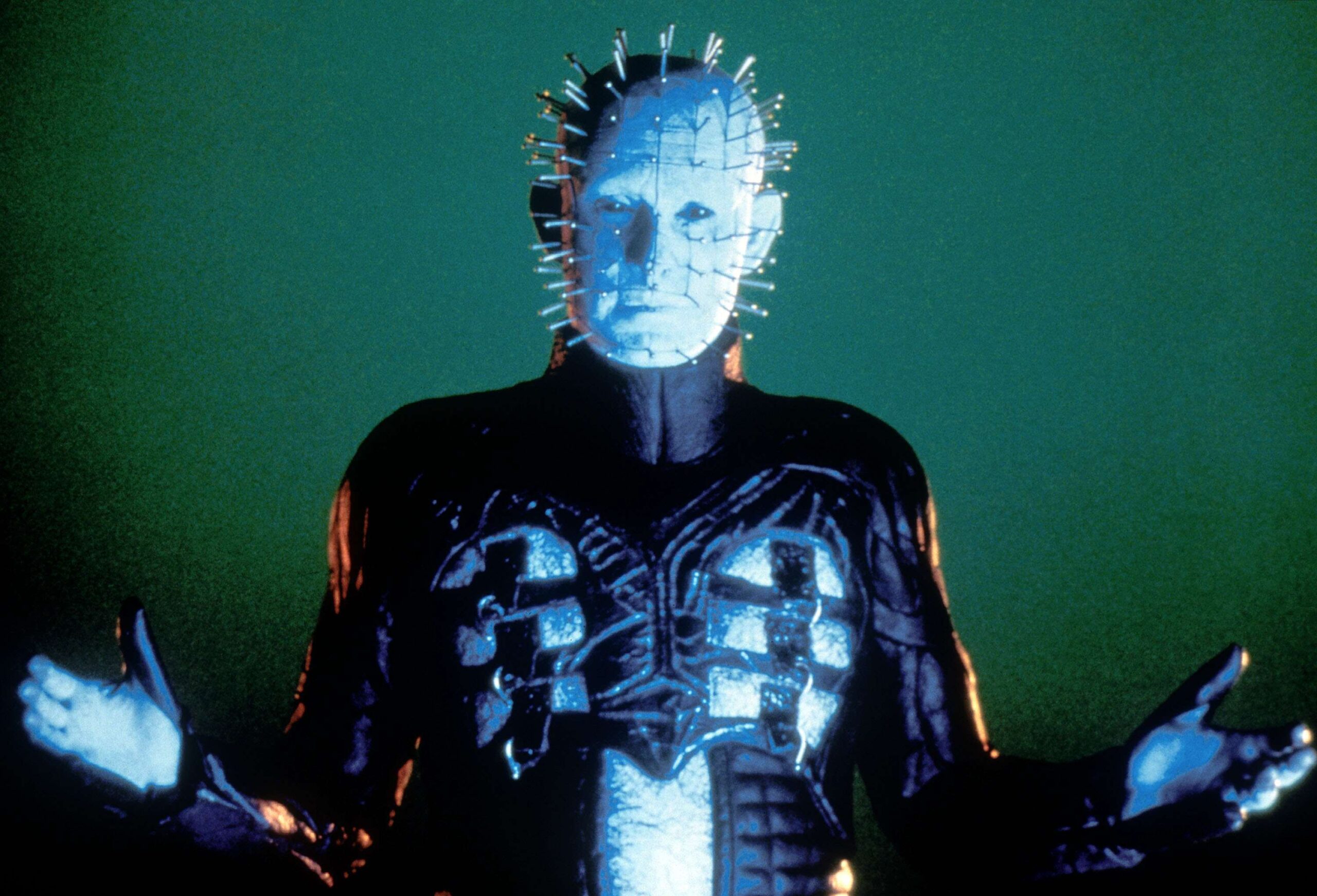
Despite the fact that there are no plans for an eleventh Hellraiser picture, we can see the light at the end of the tunnel in the form of a potential television show. Hellraiser’s rights were regained by Clive Barker in 2020, and he is producing the show.
Mark Verheiden and Michael Dougherty are working on the script, which is currently under development. Mark has worked on shows such as Battlestar Galactica and Daredevil, while Micheal has created masterpieces such as Godzilla: King of Monsters.
Barker’s big endeavour is, without a doubt, in capable hands. However, because to the current pandemic, most filming has been halted, and we may be given a release date as soon as the situation improves.
Unfortunately, none of the original stars like Doug Bradley and Ashley Laurence have said anything about their involvement with the project, but the show is still in the pre-production stage, and it would be too early to make any definite claims. We are just glad that Barker has picked up where he left off.
